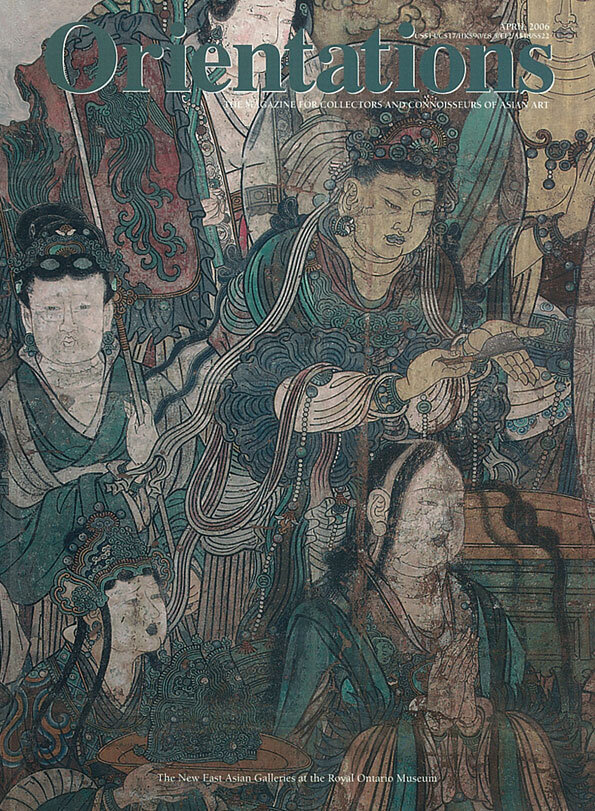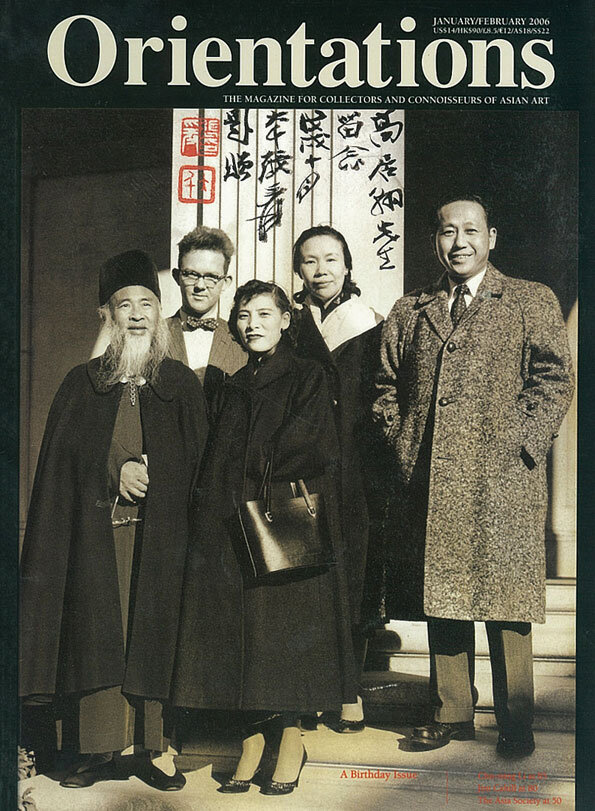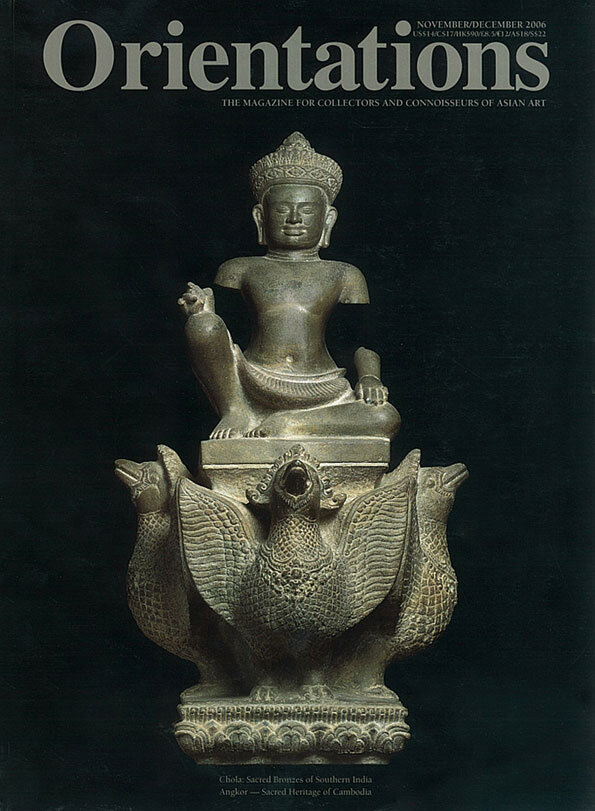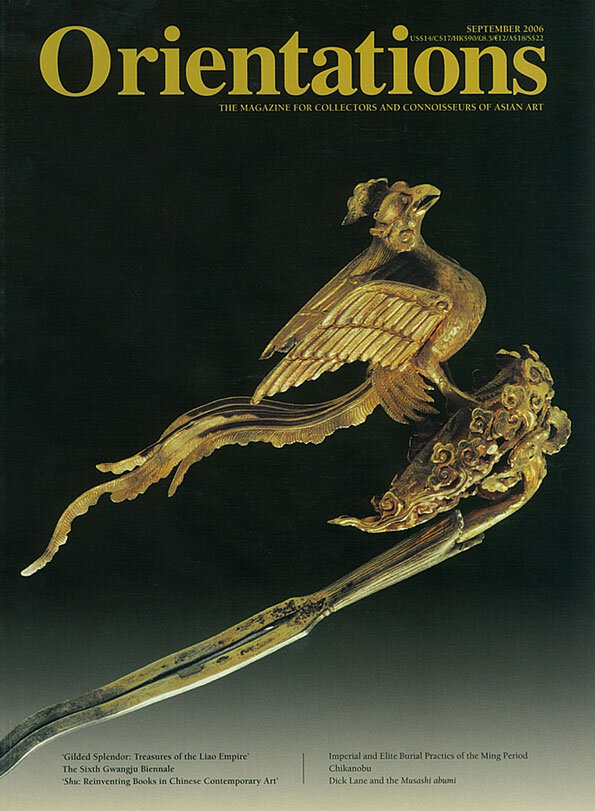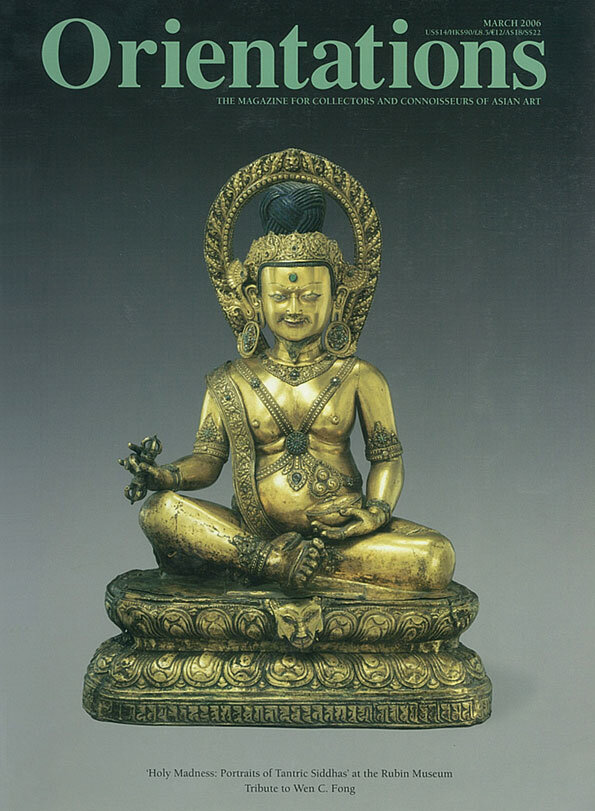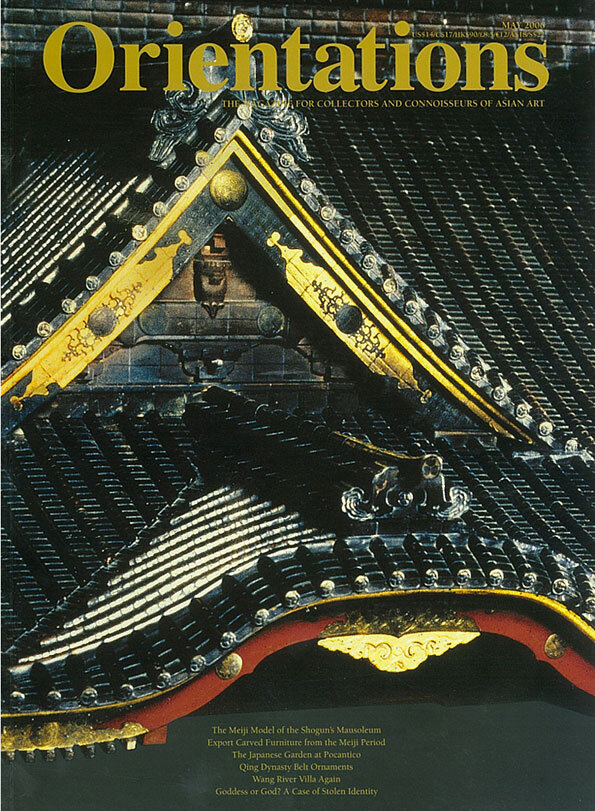 Image 1 of 1
Image 1 of 1


MAY 2006
VOLUME 37- NUMBER 4
This month's articles demonstrates that the use, interpretation and understanding of objects and artefacts continue to evolve over time and space.
As the sense for 'more authentic' Asian aesthetics developed in the West, Japanese art of the Meiji and later periods - especially that created for the Western market - became much maligned. In recent years, however, there has been the growing realization that such works provide valuable contexts for understanding modern Japan and its complex relations with the West. William Coaldrake explores the use of architectural models at the 1910 Japan-British exhibition and relates how a lost mausoleum model was found and restored. Yumiko Yamamori explains how an export furniture market developed in Japan and why it was so short-lived. The Rockefeller garden described by Cynthia Altman is the result of American and Japanese colloboration over half a century. As demonstrated by Monika Bincsik, foreign demand ensured the survival of traditional Japanese crafts such as lacquer.
Mary Slusser reveals that an image in a Kathmandu shrine commonly worshipped as goddess Kumari is in fact the lesser-known god, Kumara. Marilyn Hamburder and Linda-Ruth Salter explore the subject of belt ornaments, a much overlooked element in Qing period dress. Richard Pegg introduces Liu Dan's contemporary rendering of the classical theme 'Wangchuan Villa'.
There are previews to numerous fairs taking palce in May and June. In the commentary, Peter Wain discusses a timely issue in the collecting of 20th century ceramics.
Included also are a review by Amy Heller of the book accompanying the recent pioneering exhibition of Bon art at the Rubin Museum of Art, and previews of Asian art fairs in Brussels and London.
FEATURES
Marilyn Gardner Hamburger and Linda-Ruth Salter. Function, Fashion and Status: Qing Dynasty Belt Ornaments
Richard A. Pegg. Wang River Villa Again
Mary Shepherd Slusser. Goddess or God? A Case of Stolen Identity
Monika Bincsik. Lotus Flowers of the Lacquer Pond
Cynthia Bronson Altman. The Japanese Garden at Pocantico
Yumiko Yamamori. Export Carved Furniture: From Official Pieces to the 'Meiji Baroque'
William H. Coaldrake. The Mystery of the Meiji Model of the Shogun's Mausoleum
PREVIEWS & REVIEWS
Liza Dalby. Book Review: Edited by Annie M. Van Assche, photography by Stephano Ember: Fashioning Kimono: Dress and Modernity in Early Twentieth-Century Japan, 5 Continents Editions, Milan, 2005
Patricia Salmon. Book Review: Michael Dunn: Inspired Design, Japan's Traditional Arts, 5 Continents Editions, Milan, 2005
Julie M. Segraves. Exhibition Review: 'The Politics of Power: Art and Images from China's Cultural Revolution', Museum of Outdoor Arts, Denver
NEWS
T. June Li. Obituary: Hu Shih-chang (1924-2006)
Michael Knight. Fang Zhaoling (1914-2006)
COMMENTARY
Peter Wain. Commentary: Chinese Porcelain Fakes - Ming to Mao
VOLUME 37- NUMBER 4
This month's articles demonstrates that the use, interpretation and understanding of objects and artefacts continue to evolve over time and space.
As the sense for 'more authentic' Asian aesthetics developed in the West, Japanese art of the Meiji and later periods - especially that created for the Western market - became much maligned. In recent years, however, there has been the growing realization that such works provide valuable contexts for understanding modern Japan and its complex relations with the West. William Coaldrake explores the use of architectural models at the 1910 Japan-British exhibition and relates how a lost mausoleum model was found and restored. Yumiko Yamamori explains how an export furniture market developed in Japan and why it was so short-lived. The Rockefeller garden described by Cynthia Altman is the result of American and Japanese colloboration over half a century. As demonstrated by Monika Bincsik, foreign demand ensured the survival of traditional Japanese crafts such as lacquer.
Mary Slusser reveals that an image in a Kathmandu shrine commonly worshipped as goddess Kumari is in fact the lesser-known god, Kumara. Marilyn Hamburder and Linda-Ruth Salter explore the subject of belt ornaments, a much overlooked element in Qing period dress. Richard Pegg introduces Liu Dan's contemporary rendering of the classical theme 'Wangchuan Villa'.
There are previews to numerous fairs taking palce in May and June. In the commentary, Peter Wain discusses a timely issue in the collecting of 20th century ceramics.
Included also are a review by Amy Heller of the book accompanying the recent pioneering exhibition of Bon art at the Rubin Museum of Art, and previews of Asian art fairs in Brussels and London.
FEATURES
Marilyn Gardner Hamburger and Linda-Ruth Salter. Function, Fashion and Status: Qing Dynasty Belt Ornaments
Richard A. Pegg. Wang River Villa Again
Mary Shepherd Slusser. Goddess or God? A Case of Stolen Identity
Monika Bincsik. Lotus Flowers of the Lacquer Pond
Cynthia Bronson Altman. The Japanese Garden at Pocantico
Yumiko Yamamori. Export Carved Furniture: From Official Pieces to the 'Meiji Baroque'
William H. Coaldrake. The Mystery of the Meiji Model of the Shogun's Mausoleum
PREVIEWS & REVIEWS
Liza Dalby. Book Review: Edited by Annie M. Van Assche, photography by Stephano Ember: Fashioning Kimono: Dress and Modernity in Early Twentieth-Century Japan, 5 Continents Editions, Milan, 2005
Patricia Salmon. Book Review: Michael Dunn: Inspired Design, Japan's Traditional Arts, 5 Continents Editions, Milan, 2005
Julie M. Segraves. Exhibition Review: 'The Politics of Power: Art and Images from China's Cultural Revolution', Museum of Outdoor Arts, Denver
NEWS
T. June Li. Obituary: Hu Shih-chang (1924-2006)
Michael Knight. Fang Zhaoling (1914-2006)
COMMENTARY
Peter Wain. Commentary: Chinese Porcelain Fakes - Ming to Mao

